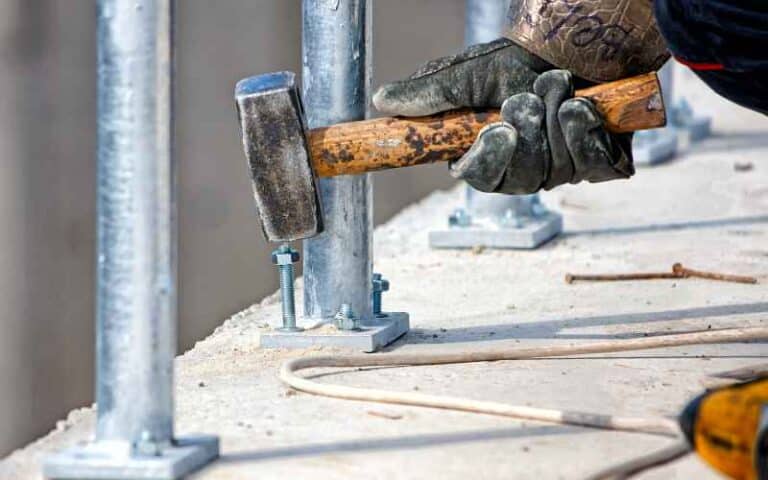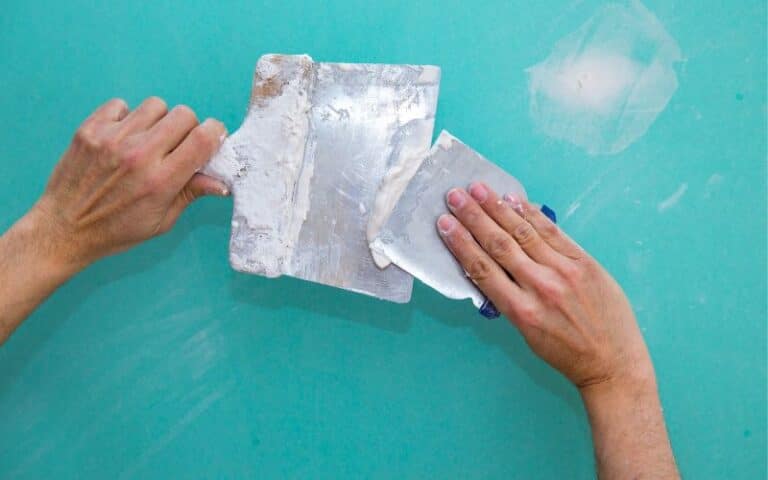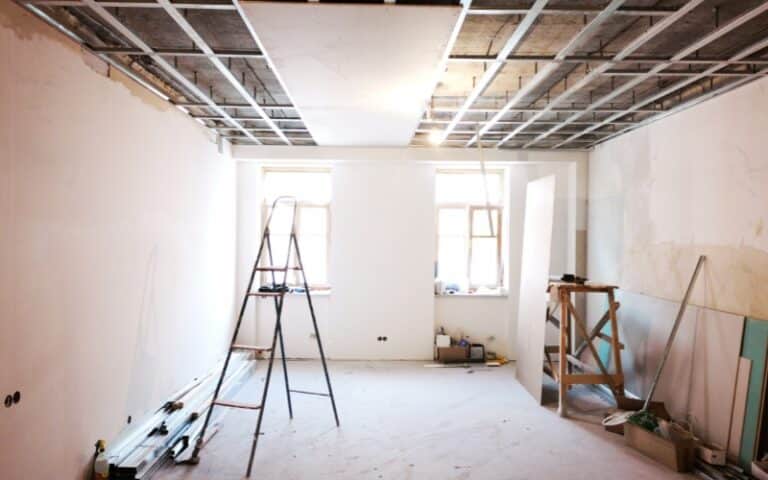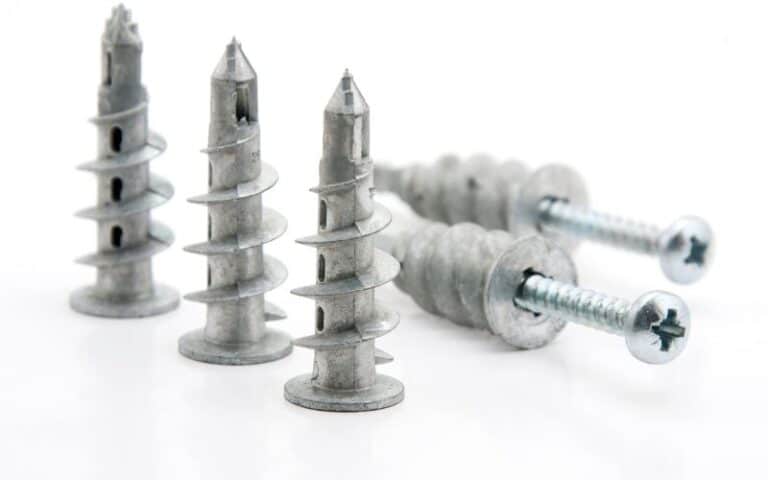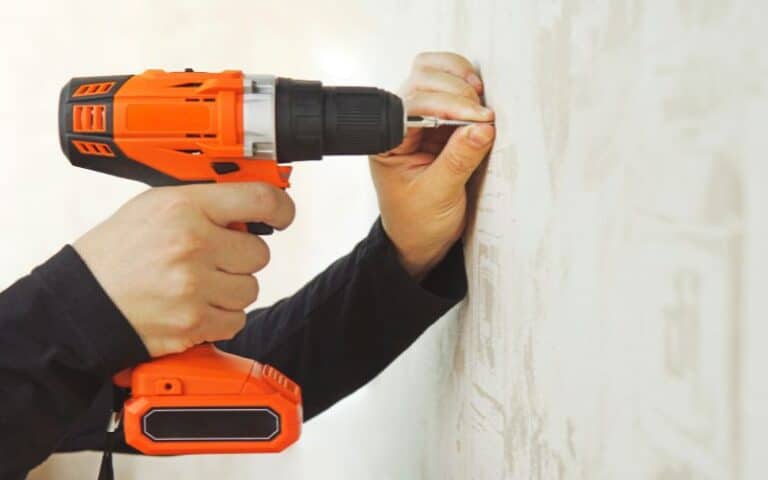Installing anchors in plasters can be tricky and challenging, especially choosing the perfect one. Plaster walls are thick, and they need a heavy-duty anchor.
There are various types of anchors, and it is important to choose the best for plaster. With the availability of drywall anchors, most people use them a lot.
However, the strength of drywall anchors is questionable against the thickness of plaster. Hence, it is customary to want to know if you can use drywall anchors in plaster.
You can’t use drywall anchors in plaster because they are too weak for the wall structure. In addition, the drywall anchors will keep pulling out of the wall. Instead, you can use specialized plaster anchors, which are more suitable for the purpose. You can also use molly bolts, toggle bolts, and expansion anchors as an alternative to plaster anchors.
This article explains the process of using drywall anchors in plaster if drywall anchors are the same as plaster anchors and the other kinds of anchors usable in plaster.
By the end, you’ll also know the best anchors for plaster.
Ready for a Drywall Quiz?
Can Drywall Anchors Be Used in Plaster?

You can’t use drywall anchors in plaster because they will pull out plaster walls. So these types of anchors are only suitable for drywall.
Drywall anchors are not suitable for plaster because the wall is too thick for the anchor. Most drywall anchors only penetrate 5/8-inch thick drywall.
But plaster walls are over 1 inch thicker than drywalls. In addition, whenever you insert a drywall anchor into a drywall, it spreads outward at the tip.
When it spreads out, it looks like two wings that rest against the wall. On the other hand, the anchors can’t spread out like this in plaster walls, making it pull out easily.
There are other types of anchors convenient for plaster walls. When looking for an anchor for a plaster wall, you should choose a special anchor for plaster or masonry rated.
Are Drywall Anchors the Same as Plaster Anchors?
Drywall anchors are different from plaster anchors. Drywall anchors are plastic that splits at the base and expands in the holes as you add the screw.
On the other hand, plaster anchors are mostly metal that goes into a pre-drilled hole in one direction.
Then, they open once to hold the wall once you push them through the hole. Unlike drywall anchors, plaster anchors are thicker and can hold more weight.
Although, some types of plastic anchors also work for plaster. These types of anchors are expansion anchors.
As the name implies, expansion anchors expand when you push them through a wall. This expansion allows them to brace plaster.
Although drywall and plaster anchors are identifiable with physical features, other basic characteristics differentiate them.
The table below outlines the significant differences between drywall anchors and plaster anchors.
| Drywall Anchors | Plaster Anchors |
|---|---|
| They are only plastics. | Some contain thicker materials like metal or a combination of plastic and metals. |
| They expand inside the wall to grip the screw. | They expand to grip this plaster wall. |
| They are suitable for drywall. | They are special anchors for plasters. |
| They split at the base. | They fold in one direction. |
| You can only use them for drywalls. | You can use them for both drywall and plaster walls. |
| Drywall anchors pull out under heavy weight. | Plaster anchors can withstand heavier weight. |
Is It Necessary to Cut Drywall to Access Plumbing?
When dealing with plumbing issues, accessing plumbing through drywall may seem necessary. However, it is often not the only option available. Alternative methods, such as using access panels or ceiling spaces, can be utilized to reach the desired area without damaging the drywall. Consider consulting a professional for the best approach to avoid unnecessary cutting.
What Other Types of Anchors Do You Use for Plaster?
You can use molly bolts or toggle bolts as an alternative to plaster anchors. These anchors are suitable for securing items to plaster walls.
You can use toggle and molly bolts for objects weighing 25 to 50 pounds. They are thicker and more rugged than standard anchors.
However, you must use one for a long period to reach the back of the lath and plaster so that it doesn’t pull out.
It would help to drill into the plaster with a masonry bit before inserting the bolts. In addition, you can use expansion anchors as another alternative.
Expansion anchors are also strong enough to withstand the thickness of plaster walls. They grip the wall material hard and stay in place.
What Are the Best Anchors for Plaster?
There are several types of anchors suitable for plaster walls. But, identifying the best one to do the job can be pretty challenging.
Plaster walls are thick, and you need a heavy-duty anchor to penetrate the plaster and hold objects firmly.
Here are the best anchors for plaster walls.
#1. Special Plaster Anchors
Plaster walls have specialized anchors suitable for their structure. Anchor manufacturers make plaster anchors as an alternative to plastic anchors.
These anchors contain materials that expand and grip these plaster walls. Unlike plastic anchors, these plaster ones always hold the walls firmly.
In addition, these anchors are versatile, and you can use them on drywall too. So, if you are unsure about the type of wall you have, using plaster anchors will help you stay safe.
Plaster anchors can withstand up to 20 lbs of weight without pulling out. All you have to do is fix it properly so it can last long.
#2. Expansion Anchors
Expansion anchors are another best alternative for plaster walls. Although the suitable wall for expansion anchors is masonry, it has a similar consistency to plaster walls.
Therefore, these anchors will work effectively for plaster. When you use expansion anchors for walls, they expand to hold the wall’s structure and stay firm.
They contain plastic material but can withstand up to 20 lbs for any object. Fortunately, they are affordable and accessible, and easy to install.
#3. Toggle Bolts
Toggle bolts are an alternative for people who prefer metal anchors. Every part of the toggle bolt is metal, making it suitable for plaster walls’ thickness.
Toggle bolts are metal bolts that weave onto two metal wings that bend in one direction. So, you must pre-drill a hole and push the bolt in to keep it firmly.
The bent wings on the bolt expand when you insert it into the wall, and it grips against the back of the lath and plaster.
It secures the bolts to a plaster wall. In addition, these bolts are heavy-duty and can withstand up to 40 lbs of weight.
To ensure it stays secure, you can position the bolt in the wall so that the wings point up and down.
This position will allow the bolt to grip against two laths and prevent it from putting pressure on a concentrated part of the plaster.
#4. Molly Bolts
Molly bolts are fully metal, just like toggle bolts; they are also suitable for plaster. A molly bolt has a metal sleeve around it that expands to grip the rear of the lath and plaster.
When the sleeve expands, it takes the shape of a three-point anchor to help secure it. The shape is identical to a tripod.
Like toggle bolts, you must pre-drill a hole before inserting and tightening the molly bolt. These bolts can withstand up to 20 lbs of the weight of any item.
In addition, you can easily install them, and they are affordable. You can get them from any hardware store around you.

